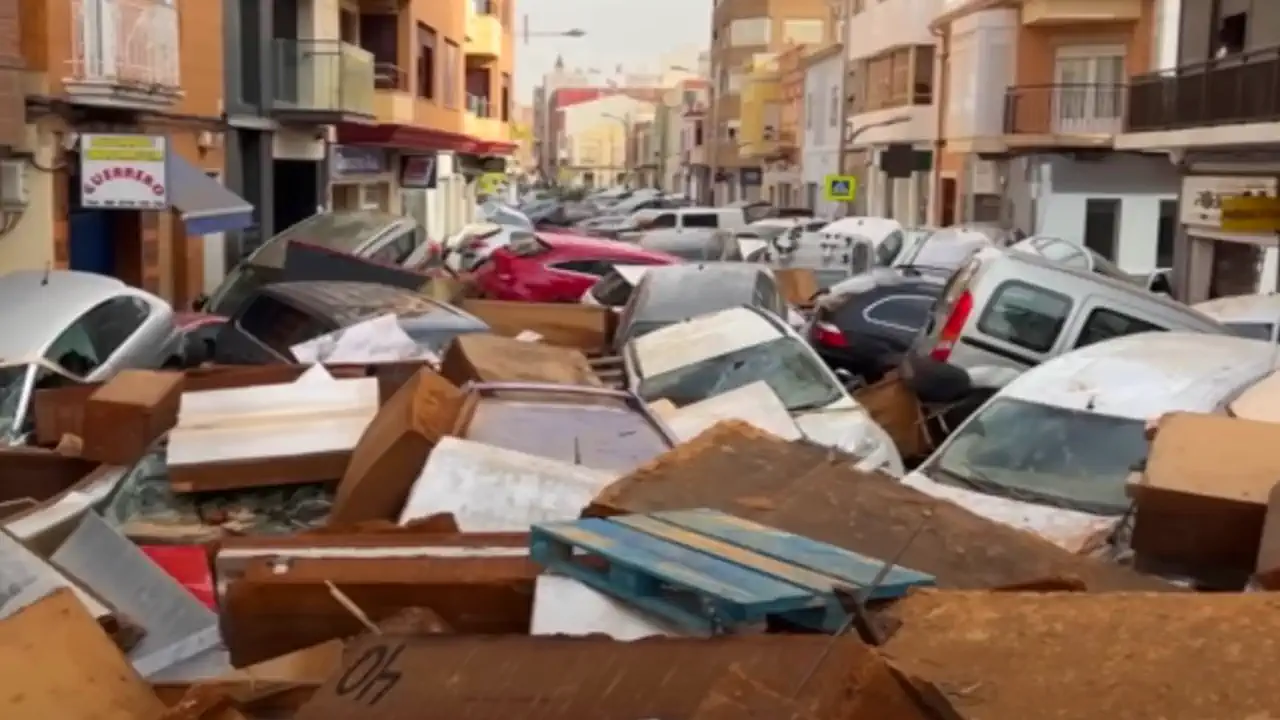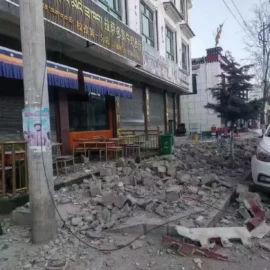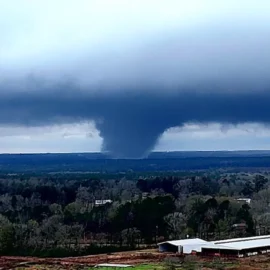Barcelona Underwater: Record-Breaking Rainfall Drenches City in Just Three Hours

On Monday, November 4, 2024, Barcelona was overwhelmed by an intense rainstorm that unleashed over two months' worth of rain within just three hours, leading to severe flooding and chaos across the region. The unprecedented rainfall disrupted flights, halted train services, and left major highways underwater, impacting thousands.
Deluge on the C-32 Highway and Impact on Infrastructure
As torrential rain poured down, the C-32 highway near Barcelona became submerged, with cars stranded in deep floodwaters. The storm, which had been brewing over eastern Spain since October 29, culminated in an extreme downpour that led to flooded streets, closed highways, and significant disruptions. Many regions in eastern Spain, particularly Catalonia, faced paralyzed public transport, while railway services were suspended across northeast Catalonia under an emergency directive from Spanish Transport Minister Óscar Puente.
A Red Alert for intense rainfall was issued across the region, with special warnings in Tarragona, southern Catalonia. Schools in Tarragona canceled classes as officials worked to prevent further risks from the ongoing deluge.
A Record-Breaking Rainfall Event
Barcelona typically receives around 60 mm (2.3 inches) of rainfall for the entire month of November. Yet, within three short hours on Monday morning, the region recorded nearly 150 mm (5.9 inches) of rain, causing rapid urban flooding and overwhelming drainage systems. This deluge followed a hailstorm that prompted mobile alerts for extreme conditions, advising residents to stay clear of flood-prone areas such as gorges and canals.
Flight Disruptions at El Prat Airport
The flooding affected operations at Barcelona's El Prat airport, one of Spain's busiest hubs, with Aena, Spain's airport operator, canceling or delaying around 50 scheduled flights. Additionally, 17 inbound flights were rerouted to other airports as the storm intensified. While the rain subsided by late morning, allowing flights to gradually resume, the initial disruptions left many travelers stranded.
A String of Disasters: Spain’s Battle with Extreme Weather
The flooding in Barcelona follows a catastrophic event in Valencia on October 29, where torrential rains led to deadly flooding and widespread destruction. The severe storm system, fueled by an isolated low-pressure phenomenon known in Spain as *Dana*, resulted in over a year's worth of rainfall within a single day across the Valencian Community, Castilla–La Mancha, and Andalusia. This deluge claimed 217 lives, making it one of the deadliest natural disasters in Spain's recent history, with dozens still missing and entire communities devastated.
The aftermath has raised concerns over stagnant floodwaters, posing health risks such as mosquito-borne diseases and bacterial infections. Hospitals in Valencia have prepared for a potential influx of patients due to these conditions, while the Spanish government has mobilized thousands of soldiers and police officers to assist in recovery efforts.
Ongoing Relief Efforts and Government Response
Prime Minister Pedro Sánchez has announced a significant aid package to support affected communities and rebuild the devastated areas. Thousands of emergency personnel have been deployed to assist in cleanup and restoration, as well as to help residents regain access to essential services. As of November 6, efforts continue to address the extensive damage and help communities recover from the flood's impact.
The storm has left Spain reeling from back-to-back disasters, prompting the nation to assess its preparedness for such extreme weather events. Climate experts warn that these occurrences may become more frequent as weather patterns shift, underscoring the need for heightened resilience measures in urban and coastal areas. With additional rainfall expected in the coming days, authorities are bracing for further challenges as they work to restore a sense of normalcy for the people of Catalonia and beyond.
Founder and chief forecaster of the Pogodnik service. He has many years of experience in the meteorological service. He is the author of numerous scientific publications and popular articles about the weather.




